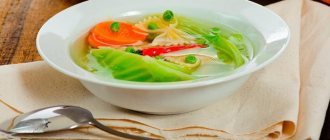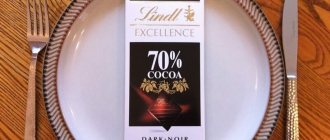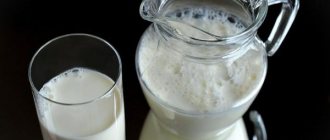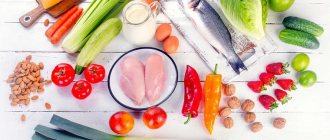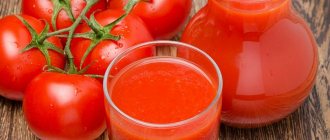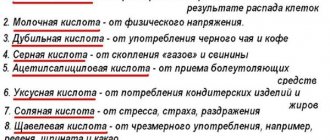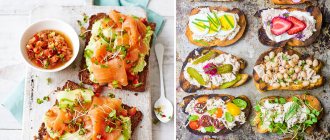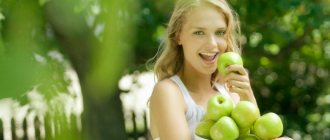General characteristics of dietary table No. 1B
Diet No. 1B fully satisfies a person’s physiological needs for energy and nutrients in a hospital setting. Diet No. 1B provides less severe protection of the stomach from mechanical, chemical and temperature irritation than diet 1A. All dishes are liquid and mushy. Excluded are dishes and products that have a strong effect on the walls and mucous membranes, stimulate secretion, are difficult to digest, hot and cold dishes. Diet No. 1B provides for fractional meals at least 6 times a day, in small portions. Milk is recommended before bed. The main difference between diet 1B and diet 1A is the gradual increase in calorie intake and the proportion of nutrients.
Therapeutic diet P
Brief description of the therapeutic diet P in the sanatorium "Energetik" General characteristics of the chemical composition and food set: Physiologically complete diet with mechanical, chemical and thermal sparing of the digestive organs. The principle of sparing is achieved by excluding products that have a strong juice effect, containing extractives, spices, and coarse fiber. Purpose of administration: Creation of favorable conditions for the normalization of impaired functions of the digestive organs. Main indications for use: Acute and exacerbation of chronic diseases of the gastrointestinal tract, liver, pancreas. Chemical composition and energy value:
- Proteins - 90 - 100 g (60% - animals).
- Fats - 80 - 90 (30% - vegetable).
- Carbohydrates - 400 - 450 g (70 - 80 g sugar).
- Calorie content - 2800 - 2900 kcal.
- Free liquid - 1.5 - 2.0 l.
- Sodium chloride - 10 g.
Basic cooking methods: Food is prepared boiled, steamed or baked. Diet: Fractional, 4 - 6 times a day. Characteristics of products and methods of preparing dishes: Weak low-fat meat broth, mucous infusions with the addition of cream, fruit and berry jelly, jelly, rosehip infusion.
Chemical composition and energy value of dietary table No. 1B
Proteins: 90 g (at least 50% animal proteins). Fats: 80 g (at least 30% vegetable fats). Carbohydrates: 300–350 g (no more than 30 g of simple carbohydrates). Daily calorie content: 2,200 – 2,500 kcal. Free liquid: 1.5–2 l. Table salt: up to 6–8 g. Vitamins: retinol (A) 2 mg, riboflavin (B2) 4 mg, thiamine (B1) 4 mg, nicotinic acid (B3) 30 mg, ascorbic acid (C) 100 mg. Macroelements: calcium 0.8 g, magnesium 0.5 g, phosphorus 1.2 g. Microelements: iron 15 mg. Optimal food temperature: from 20 to 60 degrees Celsius.
Therapeutic diet B
Brief description of the therapeutic diet B at the Energetik sanatorium. General characteristics of the chemical composition and food set: Physiologically complete diet, energy value, protein, fat and carbohydrate content correspond to nutritional standards for a healthy person not engaged in physical labor. The most difficult to digest and spicy dishes are excluded from food. Purpose of administration: Providing physiologically complete nutrition. Main indications for use: Diseases and conditions that do not require special therapeutic diets. Chemical composition and energy value:
- Proteins - 90 - 95 g (55% - animals).
- Fats - 100 - 105 g.
- Carbohydrates - 400 g.
- Calorie content - 2800 - 2900 kcal.
- Free liquid - 1.5 - 2.0 l.
- Sodium chloride - 15 g.
Basic cooking methods: Food is prepared boiled, steamed or baked. Diet: Fractional, 4 - 5 times a day.
Recommended products and dishes of dietary table No. 1B
Bread: wheat crackers up to 100 g per day. Soups: slimy water soups with semolina, oatmeal, rice cereals with the addition of cream, butter or egg-milk mixture. Puréed soups made from rice, barley, pearl barley, milk or with pureed vegetables (carrots, potatoes, cauliflower). Meat dishes: boiled or steamed purees, soufflés, quenelles, steam cutlets (pass the minced meat through a meat grinder 2 times) from beef, veal, chicken, turkey, rabbit. Fish dishes: steam soufflés, quenelles, cutlets from low-fat fish. Side dishes: liquid pureed porridge from rice, buckwheat; liquid porridge from rice, buckwheat, oatmeal, perhaps adding pureed vegetables (carrots, potatoes, cauliflower). Porridge: liquid mashed porridge from rice, buckwheat, liquid porridge from rice, buckwheat, oatmeal with the addition of milk, cream, butter. Dairy products: milk, cream, steam soufflé made from non-acidic fresh pureed cottage cheese. Eggs: soft-boiled or steamed omelet (no more than 3 eggs per day). Sweet dishes: jelly, jelly made from milk or fruits and berries, honey, sugar. Drinks: weak tea with milk, rosehip infusion, bran infusion, sweet juices diluted with water in a ratio of 1: 1. Fats: unsalted fresh butter, refined vegetable oil.
What rules should you follow when following diet No. 1b?
This diet has certain foods that are excluded from the diet during the diet. There are also recommended products.
What is included in these lists?
Recommended Products:
- Milk soups (possibly with the addition of boiled cereals), in a mucous broth.
- Bread. 100 g of crackers per day (only bread made from premium flour)
- Beef, rabbit, veal, chicken, turkey. The meat is cooked and passed through a meat grinder.
- Fish. Boiled, low-fat varieties.
- Fresh cottage cheese, soufflé (with yeast), milk, cream.
- Soft-boiled eggs, beaten egg whites, omelette (steamed).
- Oatmeal, semolina, rice, buckwheat.
- Carrots, beets, potatoes. All vegetables in the form of puree or soufflé.
- Jelly, mousse, sweet berry jelly; milk jelly, honey.
- Sour cream and milk sauce.
- Tea (can be with cream/milk); juices diluted with water.
Products excluded from diet menu No. 1b:
- Strong and fatty broths.
- Cheeses, fermented milk drinks.
- Soda (any), cocoa, coffee.
- Absolutely all snacks are excluded from the diet.
- Fruits.
- Confectionery.
Excluded foods and dishes of dietary table No. 1B
Foods that require active activity of the gastrointestinal tract, cause pain, stimulate secretion, and irritate the walls of the gastrointestinal tract should be excluded from the diet. Excluded are bread and bakery products, vegetables (except potatoes, carrots, cauliflower), snacks, pasta, coffee, cocoa, pickles, smoked foods, canned food, marinades, seasonings, sauces, carbonated drinks (including kvass). Also exclude strong tea, concentrated juices, compotes, meat and fish broths, fried and stewed dishes, mushrooms, butter dough, fermented milk products, sharp cheeses, coarse cereals (millet, corn, barley and pearl barley), sorrel, onions, cucumbers, tomatoes, legumes, white cabbage, spinach, turnips, radishes, radishes, sour fruits and berries.
General rules and principles
Diet 1b for gastritis is prescribed after diet 1a for a period of 5-30 days, after which the patient goes to general table No. 1. The exact duration of the diet is determined by the doctor on an individual basis. During a therapeutic diet, the patient must adhere to the following rules and principles of nutrition:
- Meals should be fractional - 5-6 times a day, and portions should be moderate;
- It is recommended to drink a glass of milk at night;
- Limit the consumption of broths, as they increase appetite and gastric secretion;
- Meat and fish are prepared in the form of souffles, purees, cutlets, quenelles;
- Avoid very hot or cold foods, sudden temperature fluctuations;
- It is better to cook the dishes first and then grind them;
- Rough foods and some vegetables that have not undergone heat treatment, as well as difficult-to-digest foods (mushrooms, tough meat) are excluded.
It is also necessary to exclude all foods that stimulate the secretion of gastric juice. The diet for diet No. 1b is more gentle than for table 1a, since it involves a gradual increase in caloric content and the proportion of nutrients.
Sample menu for dietary table No. 1B
First breakfast: soft-boiled egg, pureed rice porridge with milk, tea with milk. Second breakfast: baked apple with sugar, milk. Lunch: pureed pearl barley soup with carrots, steamed fish dumplings, rosehip broth. Afternoon snack: bran decoction, wheat crackers. Dinner: steamed chicken cutlets, cottage cheese soufflé, juice with water. At night: milk.
Sources:
- Order of the Ministry of Health of the Russian Federation No. 330 “On measures to improve clinical nutrition in medical institutions of the Russian Federation” dated 05.08.2003
Menu (Power Mode)
When creating a menu, you need to ensure that every day you alternate a variety of protein and cereal dishes, then the food will not seem monotonous. This diet is expanded with dishes with a new method of preparation, some vegetables and several additional grains are included, so it is more varied than Table 1A. It should be remembered that meat or fish dishes can be consumed once a day, but in the form of cutlets, dumplings, boiled minced meat or soufflé.
For the whole day, up to 5 glasses of milk are allowed (in all dishes), 20 g of butter and 40 g of sugar, crackers are added. Eggs and cottage cheese should be eaten daily.
Menu for one day
| Breakfast |
|
| Lunch |
|
| Dinner |
|
| Afternoon snack |
|
| Dinner |
|
| For the night |
|
Dietary table recipes No. 1B:
- liquid pureed oatmeal with water
- steamed 2 egg white omelette
- Tea with lemon
- rosehip decoction
- slimy soup with semolina
- steam souffle of boiled meat
- compote decoction
- meat puree
- milk cream
- steamed boiled fish soufflé
- liquid pureed buckwheat porridge on water
- fruit jelly
- curd soufflé
- egg-milk mixture
- steamed chicken cutlets
Photos used in this material belong to shutterstock.com
Features and essence of dietary table 4b
Dietary table 4b is intended for people suffering from inflammatory diseases of the digestive tract.
The main goal of such a nutritional system is to relieve the load on the gastrointestinal tract, prevent the processes of rotting/fermentation in the intestines and create conditions for rapid healing of the damaged mucous membrane of the digestive tract.
Therefore, experts recommend following a few simple rules:
- Boil food, bake (but not until a crust forms), stew or cook in a double boiler.
- Avoid any mechanical irritation of intestinal tissue. Therefore, dishes need to be ground to a mushy state.
- Food should not be hot or cold. The permitted temperature range is from +15 to +45 degrees.
- Eat fractionally, dividing the daily amount of food into 6 meals. The portions will be small, which means that the foods will be digested faster and absorbed by the body better.
It is worth paying attention to the balance of nutrients. The basis of the diet is complex carbohydrates: it is recommended to consume about 350-500 g per day. The daily intake of proteins is 100-110 g, and fats - no more than 100 g.
Diet 4b is aimed at reducing inflammatory processes in the intestines.
Nutritionists recommend limiting the amount of salt consumed to 10 g per day. As for sugar, its amount should not exceed 50 g.
Permitted and prohibited products
While following a therapeutic diet plan, you can include foods such as:
- bakery products - dry white bread and cookies;
- first courses - lean soups or dishes made with low-fat chicken and fish broths;
- lean meat - poultry fillet, veal, beef, rabbit in the form of meatballs, meatballs, cutlets;
- boiled/stewed vegetables in the form of puree - cauliflower, potatoes, carrots, zucchini, pumpkin;
- fruits - baked pears and apples;
- dairy products (except sour and too salty);
- porridge - oatmeal and rice (preferably boiled as much as possible);
- lean fish, caviar (no more than once a week);
- soft-boiled eggs or in the form of steam omelettes;
- desserts - jelly, marshmallows, mousses from non-acidic fruits;
- drinks - diluted juices from sweet fruits, jelly, compotes, tea with sugar, cocoa, coffee in small quantities.
With diet 4b, it is recommended to take first courses.
A food basket made up of such food will allow you to experiment with the menu and prepare new dishes every day.
It is important to exclude the following foods from your diet:
- white bread, fresh flour products, baked goods, baked goods made from wholemeal flour;
- fatty, rich broths/soups, sour first courses (including borscht), stews;
- fatty fish and meats;
- smoked meats;
- canned food, pickles;
- fresh or marinated vegetables, as well as mushrooms, onions, spinach, cabbage, rutabaga in any form;
- some fruits (grapes, apricots, peaches, plums, citrus fruits);
- fresh whole milk, yoghurts, sharp and salty hard cheeses;
- barley porridge, millet, pearl barley;
- legumes in any form;
- hard-boiled eggs, fried eggs in oil;
- sauces;
- hot spices;
- sweets and desserts (ice cream, dried fruits, chocolate).
With diet 4b, white bread should be excluded.


